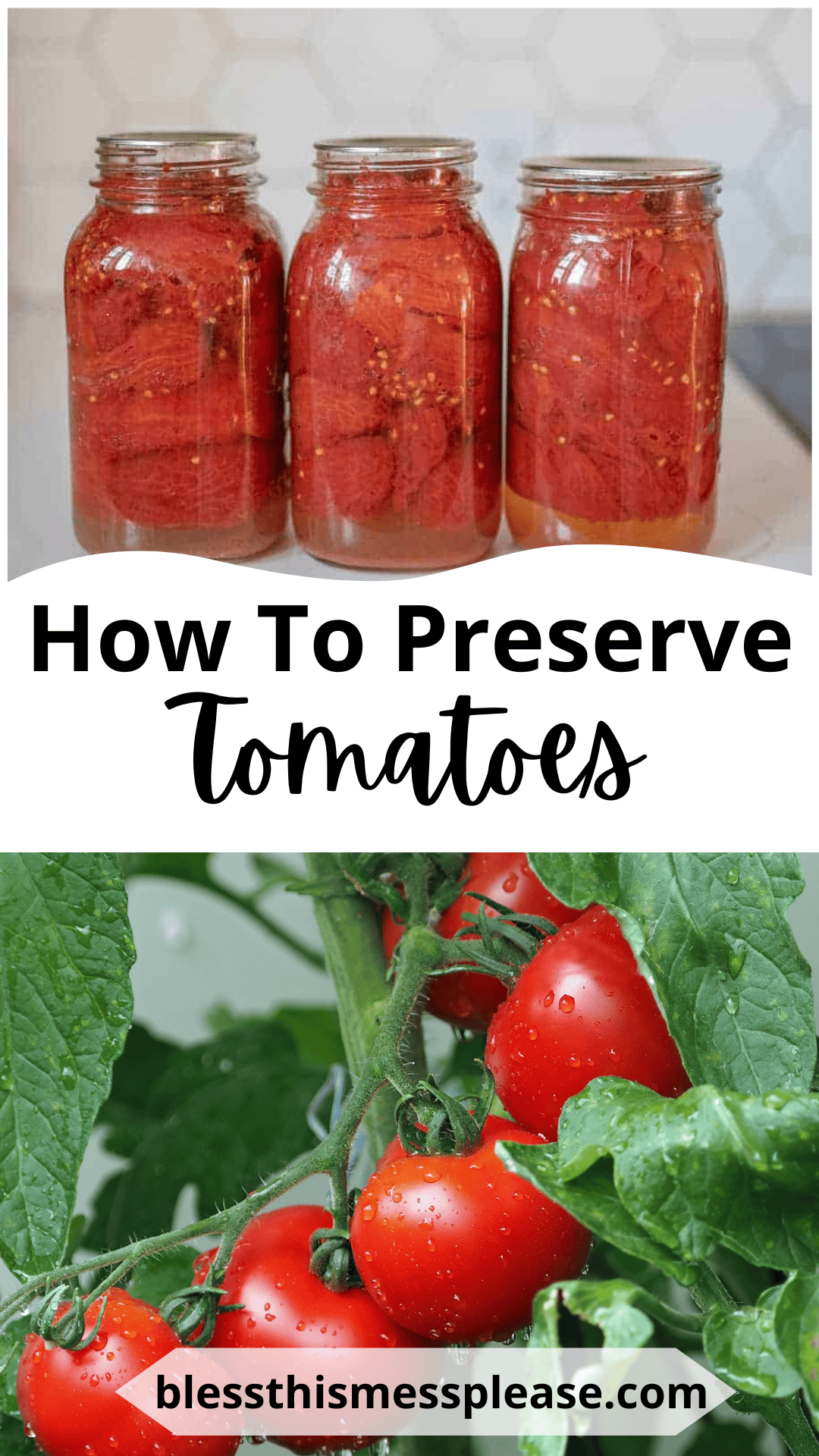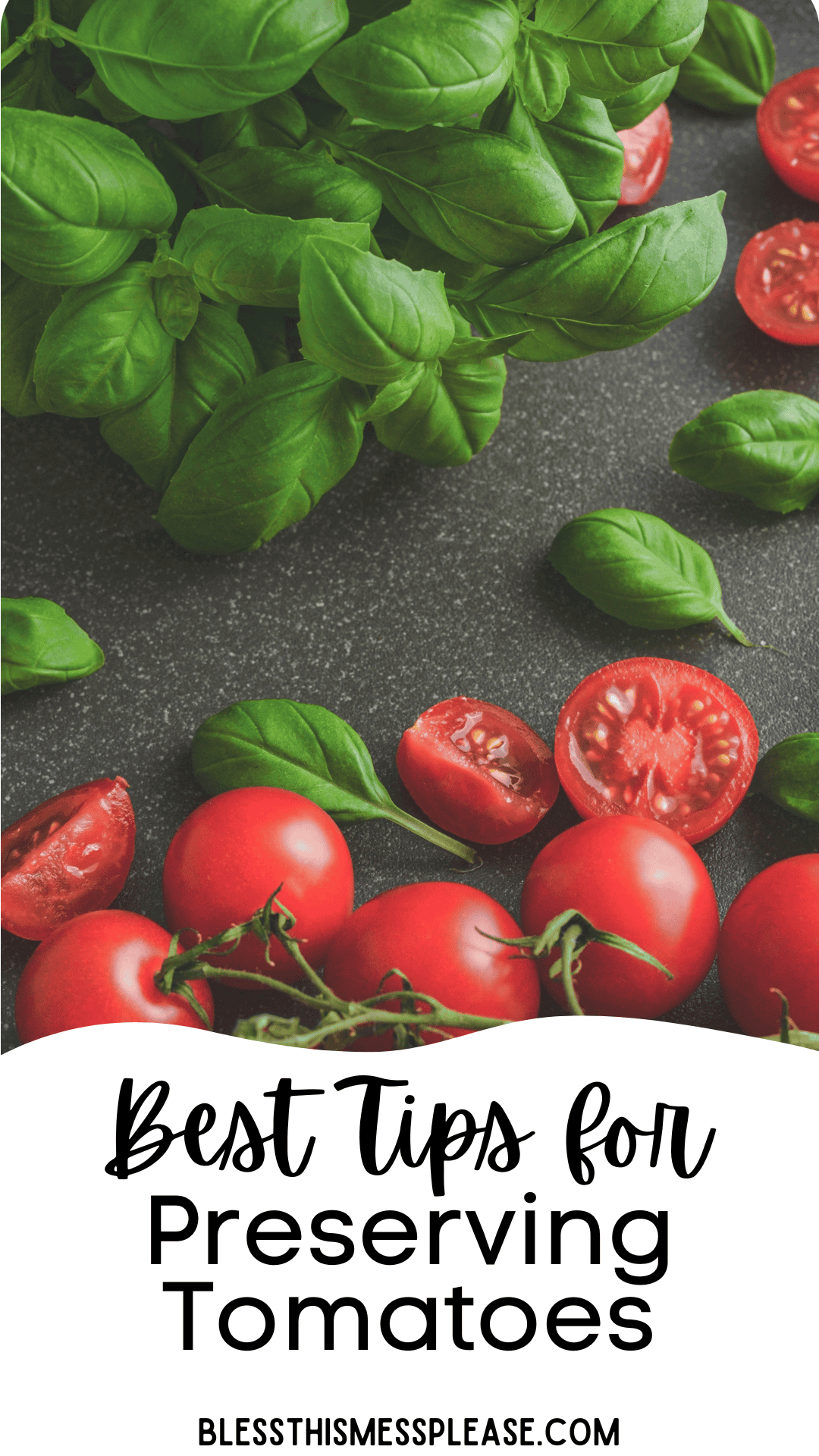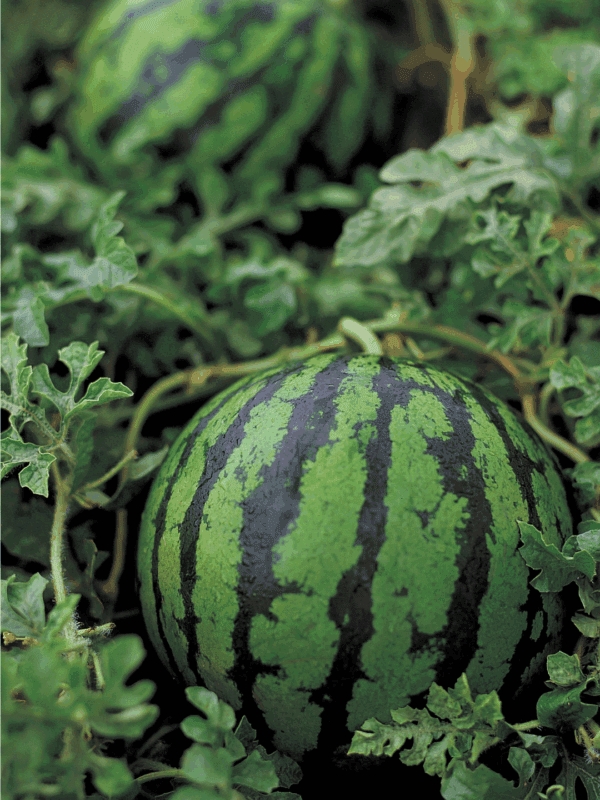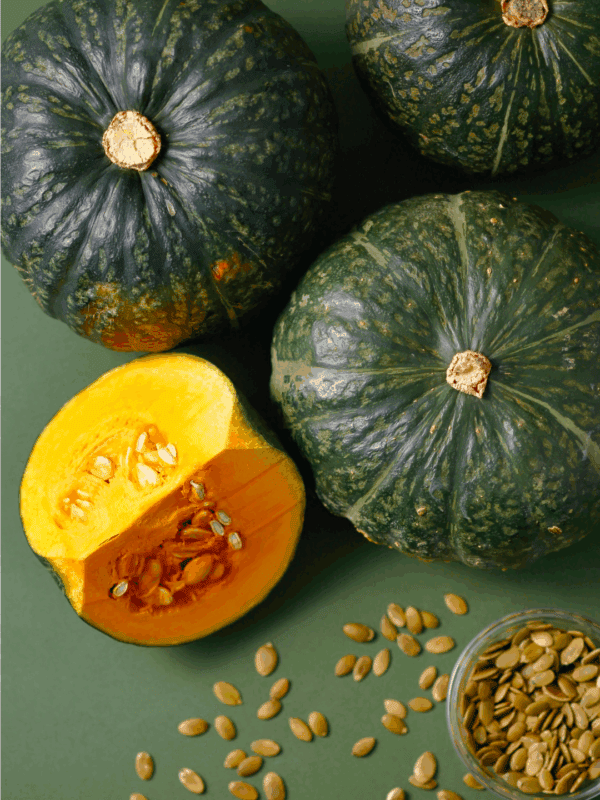This post may contain affiliate links. Please read our disclosure policy.
Enjoy learning How To Preserve Tomatoes in this foolproof guide, including expert techniques for three methods. Canning, freezing, and dehydrating can all help YOU keep your tomato harvest fresh for months!
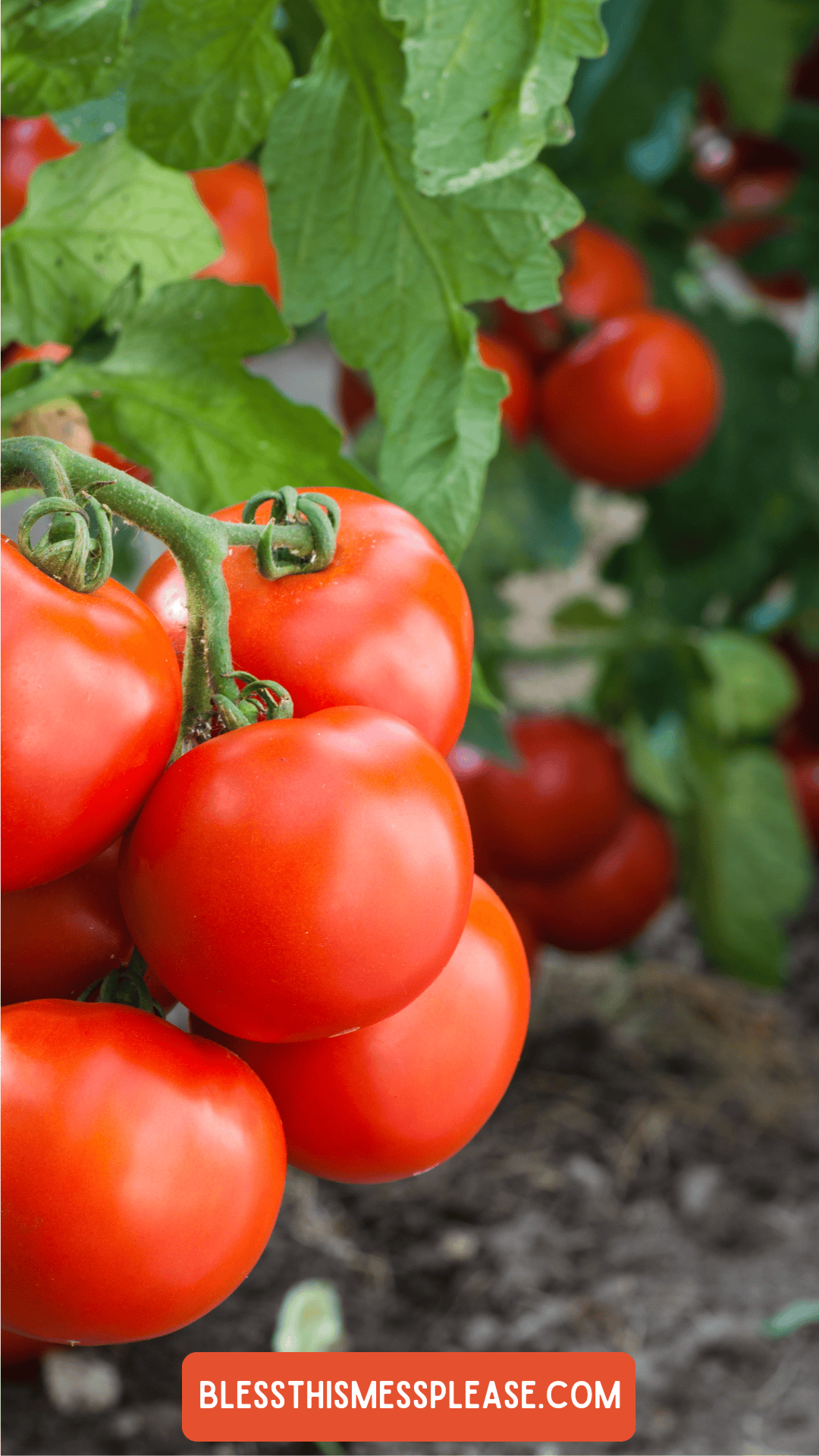
Preserving Guide: How To Preserve Tomatoes
There’s nothing quite like the taste of a perfectly ripe tomato at the height of summer, but that incredible flavor doesn’t have to disappear when the season ends! Knowing how to preserve tomatoes opens up a world of culinary possibilities, letting you savor that garden-fresh taste in hearty winter stews, homemade pasta sauces, and countless other dishes.
With the right preservation techniques, you can stock your pantry with versatile tomato products that are far superior to anything you’ll find at the grocery store, all while saving money and reducing food waste!
Table of Contents

When To Harvest Tomatoes
For best quality and flavor, tomatoes should be allowed to ripen on the vine and are their intended color.
How To Store Tomatoes
Store your tomatoes only at room temperature
Dehydrating Tomatoes
- CUT: Steam or dip in boiling water to loosen skins. Chill in cold water; peel. Cut into sections not more than 3⁄4-inch wide. Cut small pear or plum tomatoes in half.
- DEHYDRATOR: 10-18 hours
- APPEARANCE WHEN DRY: leathery to crisp
Canning Tomatoes
QUANTITY: An average of 21 pounds is needed per canner load of 7 quarts; an average of 13 pounds is needed per canner load of 9 pints.
PREPARE TOMATOES
- Wash tomatoes.
- Dip in boiling water for 30 to 60 seconds or until skins split; then dip in cold water.
- Slip off skins and remove cores.
- Leave whole or halve.
- Add enough water to cover the tomatoes and boil them gently for 5 minutes.
(HOT PACK) CANNING STEWED TOMATOES
- Add bottled lemon juice or citric acid to jars (2 Tablespoons for quarts, 1 Tablespoon for pints).
- Add 1 teaspoon of salt per quart to the jars, if desired.
- Fill hot jars with hot tomatoes.
- Add the hot cooking liquid to the hot pack, leaving 1/2-inch headspace.
- Remove air bubbles and adjust headspace if needed.
- Wipe rims of jars with a dampened clean paper towel.
- Adjust lids and process. See chart below for times for Boiling Water Bath and Pressure Canner.
RAW PACK
- Fill hot jars with raw, peeled tomatoes.
- Add 1 teaspoon salt per quart to the jar, if desired.
- Add hot water, leaving 1⁄2-inch headspace.
- Remove air bubbles and adjust headspace if needed.
- Wipe rims of jars with a dampened clean paper towel.
- Adjust lids and process. See chart below for times for Boiling Water Bath and Pressure Canner.
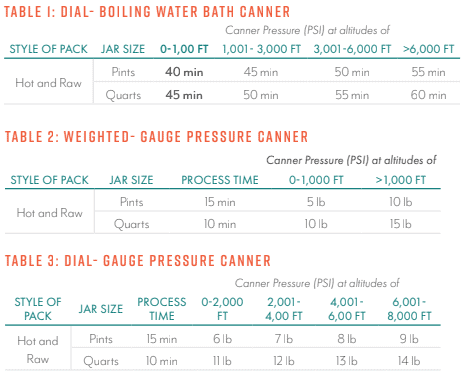
Freezing Tomatoes
PREPARING TOMATOES
Select firm, ripe tomatoes with deep red color.
FREEZING WHOLE TOMATOES
Note: Use only for cooking or seasoning as tomatoes will not be solid when thawed.
- Wash and dip in boiling water for 30 seconds to loosen skins.
- Core and peel.
- Freeze whole or in pieces.
- Pack into containers, leaving 1-inch headspace.
- Seal and freeze.
JUICE
- Wash, sort and trim firm, vine-ripened tomatoes.
- Cut in quarters or eighths.
- Simmer 5 to 10 minutes.
- Press through a sieve.
- If desired, season with 1 teaspoon salt to each quart of juice.
- Pour into containers, leaving headspace.
- Seal and freeze.
STEWED
- Remove stem ends, peel and quarter ripe tomatoes.
- Cover and cook until tender, 10 to 20 minutes.
- Place pan containing tomatoes in cold water to cool.
- Pack into containers, leaving headspace.
- Seal and freeze.
🍎🫙 Get a free Preserving Guide for all the details to dehydrate, can, and freeze 42 fruits and vegetables — get the FREE GUIDE here!
Expert Tips
- Storage Time: Properly canned tomatoes last 1-2 years, frozen tomatoes maintain quality for 8-12 months, and dehydrated tomatoes keep for 6-12 months when stored properly.
- Best Tomato Varieties: Paste tomatoes like San Marzano, Roma, and Amish Paste have lower water content and concentrate better. However, any ripe, unblemished tomato can be preserved successfully—adjust your method based on the variety’s characteristics.
- Skin or No Skin: Whether or not you want to keep the skin can depend on your preservation method and preference. For canning whole or crushed tomatoes, removing skins creates a smoother texture. For freezing, skins slip off easily after thawing. For dehydrating, skin adds nutrition and can be left on.
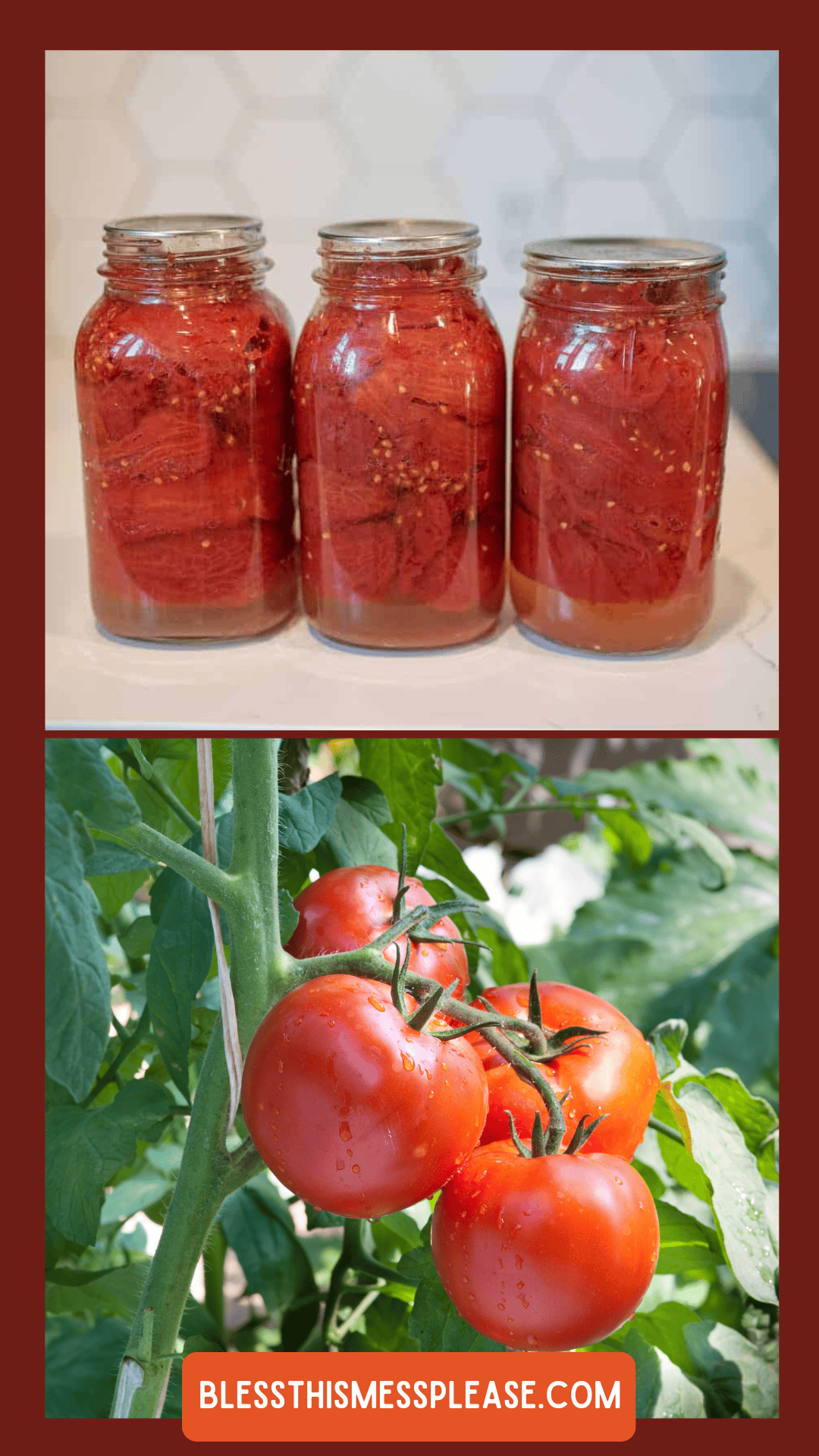
More Tips For Preserving The Harvest
Preserving Guide
How To Preserve Watermelon
Preserving Guide
How To Preserve Sweet Potatoes
Preserving Guide
How To Preserve Winter Squash
Preserving Guide
How To Preserve Summer Squash
Did you use any of these preserving tips? Leave a note below in the comments or share it on Instagram, Facebook, or Pinterest!

